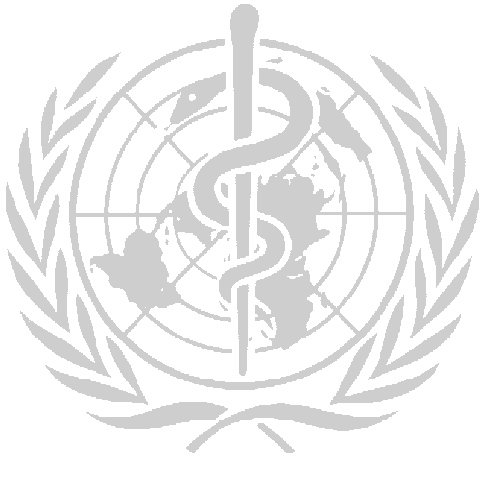THE ROLE OF GENE BANKS IN FINDING AND CONSERVING
2 REGULATION AND SUPERVISION OF BANKS THE REGULATION AND20 JUNE 2010 DEAR MR BANKS RBKC CORE STRATEGY
4 ARE MULTINATIONAL BANKS DIFFERENT? DISCUSSION OF NAVARETTI ET
4 REASONS WHY SEMANTICS HELP MAKE BIOBANKS BETTER THE
6 COOPERATIVE BANKS IN INDIA STRENGTHENING THROUGH CORPORATE
ADÓSZÁM18286746141 BUDAPEST 1131 ÖRDÖGMALOM UTCA 8 BANKSZ 101014870737410001003008 WWWCSODAKAPUORG
The role of gene banks in finding and conserving our cultural heritage
The role of gene banks in finding and conserving our cultural heritage
Presented by Morten Rasmussen, NordGen – Plants,
P.O. Box 41, SE-23053 Alnarp, Sweden
Summarized by Lila Towle, Frøsamlerne
A gene bank is a collection of seeds and other plant reproductive material, primarily of cultivated plants and their wild relatives. These collections represent as far as possible the gene pools of our crop plants, that is, the genetic basis of agriculture and horticulture. The mandate of a gene bank is to secure the conservation of these collected plant genetic resources and provide access to them.
Gene banks have primarily been concerned with ex situ or off-site conservation: dried and frozen seed samples, vegetatively propagated plants growing in ‘clonal archives’ at different sites, in vitro preservation (e.g. potatoes) of tiny growing tips in test tubes, or cryopreservation at extremely low temperatures (e.g. growing tips of hops).
We are increasingly aware that in situ (on-farm, in nature) preservation of some species, plant associations and forms of cultivation must be supported if we are to maintain them for the future. These can be relict plants on threatened sites, on-farm areas of special biological interest such as meadows, or wild crop relatives in marginal natural biotopes.
Gene banks are increasingly a part of regional and international networks – including the European Cooperative Programme for PGR – and international regulations, such as the Biodiversity Convention (Rio Convention) and the 2001 International Treaty on Plant Genetic Resources (ITPGRFA).
All gene banks have the responsibilities of acquiring the most important plant materials for their region without undue duplication; successfully treating and storing samples; maintaining and regenerating the collection without losing or changing genetic material (e.g. by mixing or mislabelling seed samples, letting them cross-pollinate in the field, or selecting only a part of the genetic diversity of a variety when saving the seed); and providing security through back-up collections.
In addition, a gene bank is responsible for registering, studying, describing, and documenting its collection, and making both information and plant material available to researchers and other interested users. All these activities are increasingly important and challenging. They are labour intensive, require specialist knowledge and equipment (e.g. computer systems), and involve upgrading from earlier recording systems. They have to meet modern demands for openness, user-friendliness, and greater access to knowledge and information – including cultural and historical information.
On January 1st, 2008, the 3 Nordic genetic resource institutions – including the Nordic Gene Bank – became NordGen, the Nordic Genetic Resource Centre. In accordance with the strategy of the Nordic Council of Ministers for sustainable development, its mandate includes the following:
Secure the whole range of Nordic genetic diversity in animal, agricultural, horticultural and forest species
Actively promote Nordic cooperation on the sustainable utilisation and conservation of genetic resources
Accentuate the value of societal & cultural history of genetic diversity within & between species
Function as a vital knowledge and service centre for genetic resources in the public domain – and provide the necessary knowledge to political decision makers
Contribute to international collaboration, openness, and fair exploitation of genetic resources
This new and broader mandate makes necessary the development of new principles, tools and programmes in all these strategic areas of activity. Among the developments taking place:
Establishment and operation of the Svalbard Global Seed Vault – a global secure seed storage facility.
The development of new documents for acquisition of and access to plant genetic resources, including new Material Transfer Agreements (MTAs) to meet the requirements of multilateral agreements. One of these will in the future make it easier for “hobby users” – both the general public and special collections, such as museum gardens and seed saver organisations – to request seed and clone samples. At the same time, NordGen will become better able to document the utilisation of its collected PGR.
Participation in new types of plant breeding relevant to agriculture in a changing climate, such as the Nordic pre-breeding initiative. Modern breeding initiatives demand large amounts of relevant, digitalized information, often in the form of molecular genetic information. And modern breeding goals often involve “expensive” traits, those which are complex, less easily observable and likely to involve collaborative, long-term investigation – such as taste, nutritional quality, disease/pest resistance or adaptability to climate change.
Creation of relationships with new stakeholders on the gene scene: local food producers, Slow Food and organic movements, “New Nordic Food”, museums and living history centres, seed saver organisations, and enthusiasts of many types in the general public. All these “new users” have high expectations: of documentation of origin (“genuineness”), solid cultural history information (when, where, who, how & why?), information on growing and eating quality, and if possible a “good story”. They expect digitally searchable, and if possible interactive, information – and quick access to gene bank material. And in time to come, many of them will expect to be active participants and collaborators in the process.
ADVANCING AUSTRALIA’S ‘HUMAN CAPITAL AGENDA’ GARY BANKS
ANMÄL DITT KONTO TILL SWEDBANKS KONTOREGISTER OCH FÅ DINA
ARE BANKS SPECIAL? INDIVIDUAL BANK FAILURES ARE MERCIFULLY RARE
Tags: banks in, gene banks, banks, finding, conserving
- DOM ZDRAVLJA BOLJEVAC BR5 1539118 OD 01VI 2018GOD NA
- SUCCESS MEASURES RESPONSE TO THE GOVERNMENT GREEN PAPER ON
- ADÓABC HASZNÁLATI ÚTMUTATÓ BEVEZETŐ A KUTATÁSUNK SORÁN KIDOLGOZOTT ADÓABC
- GRUPO 70 ESTÁGIO SUPERVISIONADO III – MODALIDADE REMOTA (20XX)
- RD INSTRUCTION 1970I TABLE OF CONTENTS PART 1970 –
- ADÓELŐLEGNYILATKOZAT 2010 ÉVBEN AZ ADÓELŐLEG MEGHATÁROZÁSA SORÁN FIGYELEMBE VEHETŐ
- 6 DECRETO NÚMERO 3615 DE 2005 HOJA NO CONTINUACIÓN
- CURS DE FORMARE A ABILITĂȚILOR DE MEDIERE FORMULAR DATE
- EDSS 545 A AND B SECONDARY SCIENCE METHODS (30
- ADATLAP AZ EGYSÉGES MUNKAÜGYI NYILVÁNTARTÁSBA TÖRTÉNŐ BEJELENTÉSEKHEZ I MUNKAADÓRA
- DIPLOMADO EN INTERPRETACIÓN Y ARGUMENTACIÓN JURÍDICA DIRECTORES ACADÉMICOS DR
- OCFS0014 (REV 72005) NEW YORK STATE OFFICE OF CHILDREN
- ADATLAP KÜLFÖLDI SZOLGÁLATRA TÖRTÉNŐ JELENTKEZÉSHEZ NÉV RENDFOKOZAT A MEGPÁLYÁZOTT
- D EPARTAMENTO DE DESARROLLO HUMANO DE LA OEA PROGRAMA
- TYPES OF NARRATIVE PATTERNS LINEAR JOURNEY OF CENTRAL CHARACTER
- TITULO LA ARCHIVÍSTICA Y LOS PRODUCTOS INFORMÁTICOS CATÁLOGO
- ADÁSVÉTELI SZERZŐDÉS HIRDETMÉNYI ÚTON TÖRTÉNŐ KÖZLÉSÉRE IRÁNYULÓ KÖZZÉTÉTELI KÉRELEM
- PROSPECTUS FOR SHORTTERM CLIMATE SIMULATIONS USING THE CCSM PETER
- ADATVÉDELMI TÁJÉKOZTATÓ BAKONYI ERŐMŰ ZÁRTKÖRŰEN MŰKÖDŐ RÉSZVÉNYTÁRSASÁG TÁVHŐ ÜGYFELEK
- ADATVÉDELMI TÁJÉKOZTATÓ FILMJUS ADATVÉDELMI TÁJÉKOZTATÓ A FILMJUS EGYESÜLET
- ADATKEZELÉSI TÁJÉKOZTATÓ WWWREFLEXSHOPHU BEVEZETÉS A YOCORE BT (4028 DEBRECEN
- DET KONGELIGE HELSE OG OMSORGSDEPARTEMENT POSTBOKS 8011 DEP 0030
- DEVOIR COMMUN DE SES 1ES1ES2 DURÉE QUATRE HEURES
- 01 PROGRAMACIÓN DE AULA UNIDAD 1 EL PGCPYMES EL
- SHARK BIOLOGY COA 422422L THE UNIVERSITY OF SOUTHERN MISSISSIPPI
- ADATKEZELÉSI TÁJÉKOZTATÓ TISZTELT ÉRINTETT! A SZIGETBECSEMAKÁD ÁLTALÁNOS ISKOLA THÚRY
- A N U N C I O EL CONSEJO
- ADATKEZELÉSI TÁJÉKOZTATÓ 1 AZ ADATKEZELÉSI TÁJÉKOZTATÓ CÉLJA HATÁLYA IRÁNYADÓ
- NATIONAL INSURANCE NO SERVICE NO APPLICATION FOR PAYMENT OF
- SURAT KESEPAKATAN BERSAMA ANTARA SMAMASMK …………………………………… NOMOR XXX
 OGRANICZANIE ILOŚCI MIEJSCA DOSTĘPNEGO DLA UŻYTKOWNIKÓW CELEM ĆWICZENIA
OGRANICZANIE ILOŚCI MIEJSCA DOSTĘPNEGO DLA UŻYTKOWNIKÓW CELEM ĆWICZENIATIPOLOGIE DE TELEMUNCA CITIND DIN DIVERSE SURSE BIBLIOGRAFICE
PROBLEMAS DE LA GERMINACIÓN EN SEMILLAS LA COMPOSICIÓN
 F INAL REPORT FOR THE CANADIAN WHOPAHO COLLABORATING CENTRE
F INAL REPORT FOR THE CANADIAN WHOPAHO COLLABORATING CENTRE“STEPHEN KING ON FEAR” – A PERSONAL ESSAY RATIONAL
 PREZYDENT MIASTA OTWOCKA UL ARMII KRAJOWEJ 5 05400 OTWOCK
PREZYDENT MIASTA OTWOCKA UL ARMII KRAJOWEJ 5 05400 OTWOCK NIMF BORRADOR PARA CONSULTA ENTRE PAÍSES MIEMBRO JUNIO DE
NIMF BORRADOR PARA CONSULTA ENTRE PAÍSES MIEMBRO JUNIO DE 1 PRAŠYMO NR 2 006 M LIETUVIŲ FONDO PARAMOS
1 PRAŠYMO NR 2 006 M LIETUVIŲ FONDO PARAMOS 7 1 ОБЩИЕ ПОЛОЖЕНИЯ ОТКРЫТЫЙ ВСЕРОССИЙСКИЙ ТУРНИР ПО КОМПЛЕКСНОМУ
7 1 ОБЩИЕ ПОЛОЖЕНИЯ ОТКРЫТЫЙ ВСЕРОССИЙСКИЙ ТУРНИР ПО КОМПЛЕКСНОМУ LEY FEDERAL DE TURISMO CÁMARA DE DIPUTADOS DEL H
LEY FEDERAL DE TURISMO CÁMARA DE DIPUTADOS DEL H DINÁMICA SE PUEDE DEFINIR LA DINÁMICA (CONOCIDA A VECES
DINÁMICA SE PUEDE DEFINIR LA DINÁMICA (CONOCIDA A VECES CROMATOGRAFIA 1 DESCRIVI I PRINCIPALI MECCANISMI DI SEPARAZIONE IN
CROMATOGRAFIA 1 DESCRIVI I PRINCIPALI MECCANISMI DI SEPARAZIONE IN MDOT FEATURE CODES ROADZONE1 (LINES) BC BACK OF CURB
MDOT FEATURE CODES ROADZONE1 (LINES) BC BACK OF CURBSE PUEDE HABLAR DE UNIDAD Y DIVERSIDAD AL MISMO
 2º BORRADOR DE PREDIAGNÓSTICO DEL MEDIO AMBIENTE MESA 3
2º BORRADOR DE PREDIAGNÓSTICO DEL MEDIO AMBIENTE MESA 3 GOBIERNO DE CHILE SUBSECRETARIA DE TRANSPORTES PUBLICACIÓN Nº 169
GOBIERNO DE CHILE SUBSECRETARIA DE TRANSPORTES PUBLICACIÓN Nº 169WYMAGANIA NA POSZCZEGÓLNE OCENY KLASA VI LICZBY NATURALNE I
 KELCOT A3016 ACRILICO ACUOSO IMPERMEABILIZANTE DESCRIPCION SISTEMA
KELCOT A3016 ACRILICO ACUOSO IMPERMEABILIZANTE DESCRIPCION SISTEMATema 84 Obligaciones Nacidas de Culpa o Negligencia su
CHIKUNG DE LA GRULLA DE WUDANG CRANE QIGONG MASTER